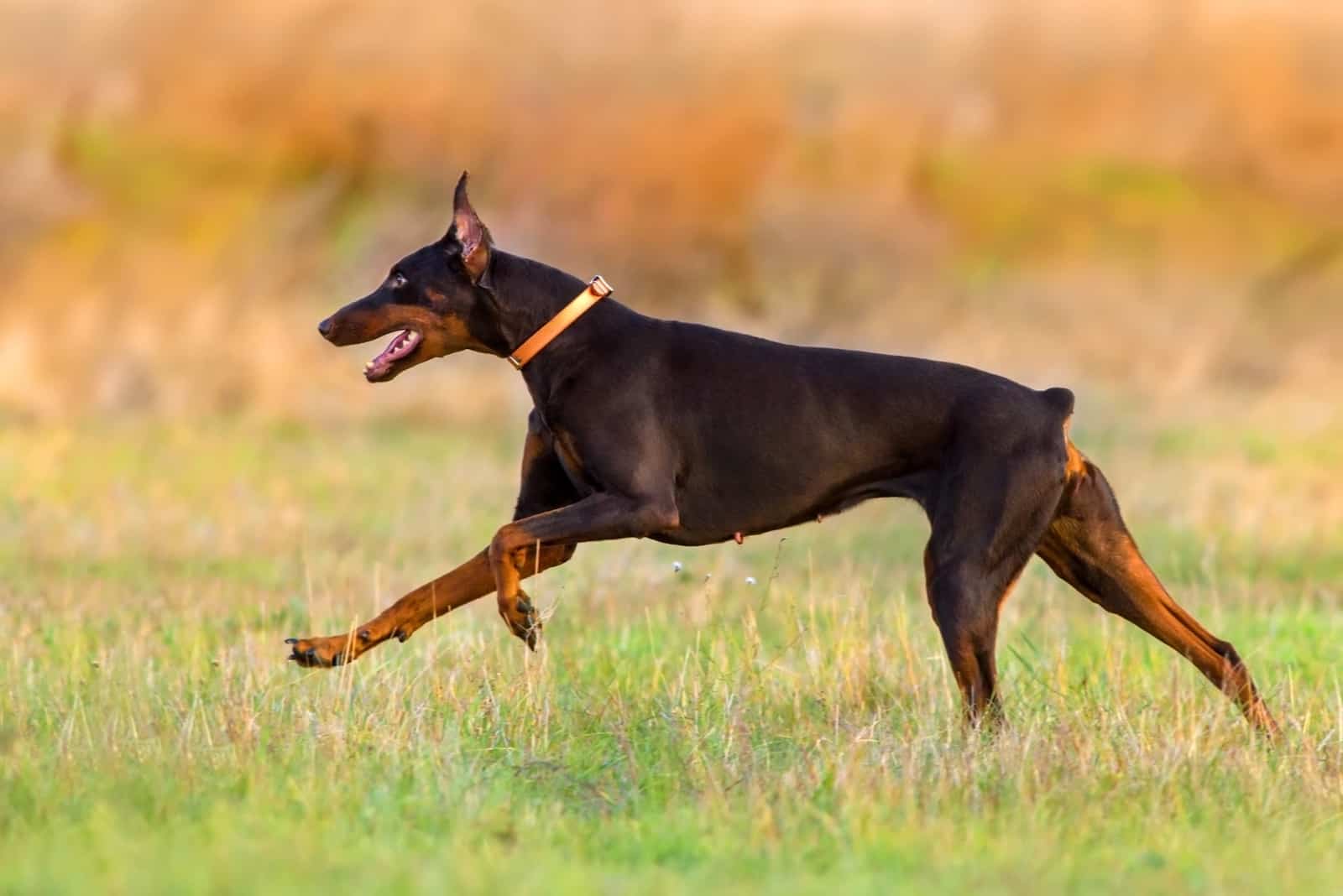The Doberman Pinscher is something of a legend, with its iconic, impressive looks. We usually imagine these big dogs with a classic black and rust coat, intelligent eyes that are always alert, and sharp features that warn us that this isn’t a dog you want to mess with.
They are regarded as the ultimate guard dog, featuring in TV shows and movies as a powerful, silent sentinel watching over the villain’s lair, or calmly and faithfully protecting property and possessions. Whenever an intruder approaches, these dogs become snarling beasts, saliva dripping from those intimidating fangs as they fix their gaze on their prey…
Few people are foolish enough to tangle with them, either in the world of film or in real life!
Even so, there’s another side to the Dobie that dog lovers know very well. They are affectionate with their families and amazing around the kids they grow up with. They have a lot of love to give, and they are keen to show it.
But what do you know about the Warlock Doberman? Is it a real thing? Are they very different from ‘normal’ Dobies? Over the years, a lot of myths and misinformation has been spread regarding the Warlock Doberman. We’re going to try to set the record straight and let you know the facts!
What Is A Warlock Doberman?
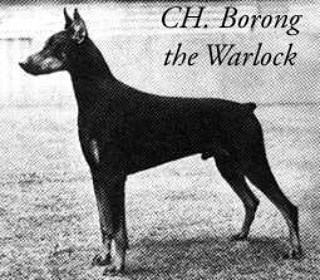
Photo from: @jacksonskennel
It seems like an obvious and straightforward question, doesn’t it? But the meaning has changed or is often misunderstood.
Essentially, people these days often use the term Warlock Doberman to describe a Dobie that is oversized or in some way ‘enhanced.’ Some of these dogs are crossbreeds of the Doberman and Great Dane, or the Doberman and Rottweiler.
People might also use it in relation to a dog they think is a bit special or is somehow better than the rest. They might even think it is the offspring of the original Warlock Doberman, part of an exclusive and pure bloodline.
There are several reasons why none of these explanations are acceptable, and we’ll deal with them one by one along the way.
But first, let’s see where it all started.
The story begins back in 1955 when Florida-based breeders Theodosia and Henry Frampton named a pup Borong the Warlock. He was a special pup in many ways but by no means the best in his litter. He was a standard-sized male Doberman who loved people and got on with other dogs. He formed a strong bond with Henry and accompanied him across America, Canada, and Argentina for many years on business trips.
While on these trips, Henry would enter his beloved pup (whom he called Warlock, apparently) into dog shows locally, and the awards began to pile up. Henry was a very sociable man, with a natural charm that gained him a lot of friends as he traveled.
This, coupled with Borong’s even-temper and good looks, started to get them noticed. More awards and prizes followed, and people approached Henry with requests to use Warlock to sire litters of Doberman puppies.
By the mid-1960s, the name Champion Borong the Warlock became synonymous with excellence in all things Dobie-related. He won national awards in the show ring at events run by the Doberman Pinscher Club of America (DPCA), even in his old age. He was a great example of the family-oriented American Doberman, as opposed to the European Doberman, which is more geared towards working.
However, his career came to an abrupt end.
Henry Frampton died suddenly of a heart attack in 1966. His faithful, loyal, and loving dog never recovered from this, passing away soon after, possibly as a result of the grief he was unable to bear.
There are two major points to this story:
• Warlock was a purebred Doberman.
• He was well within the breed standards and was in no way supersized or enhanced.
By all accounts, he wasn’t even the best in his litter! He just happened to be a devoted and affectionate dog who was in the right place at the right time and with the right owner.
Warlock Doberman Vs. Regular Doberman
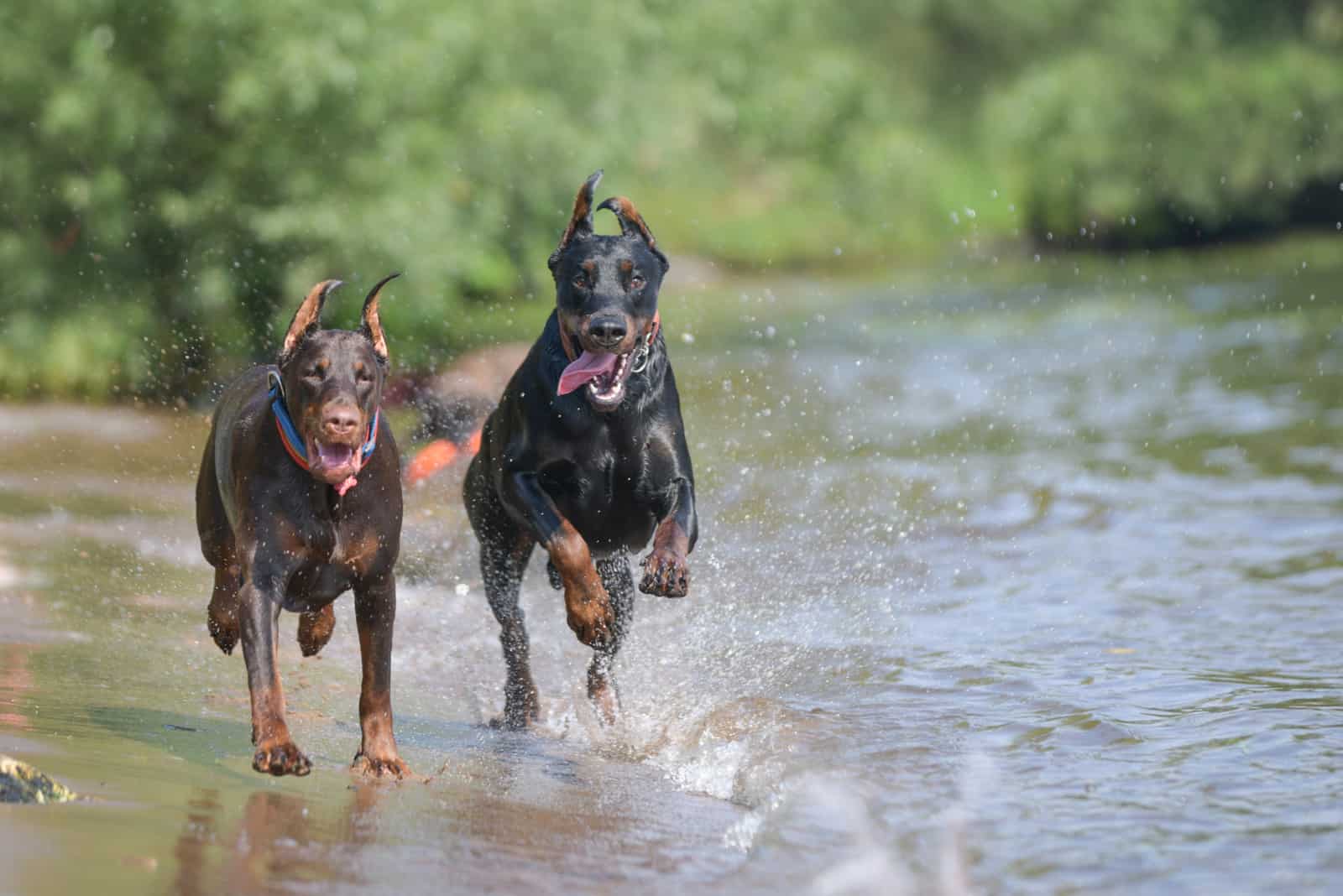
The basic breed standards for the regular Doberman Pinscher are as follows:
[table id=305 /]
The coat is short and smooth, and standard coat colors are black, fawn, blue, and red, all with rust markings. White dogs (partial albino) are possible but will be disqualified from the show ring. You may come across other colors, like solid black, solid fawn, etc., but many of these are the result of inbreeding or produced by inexperienced/unethical breeders who are trying to maximize profits by making ‘rare’ colors.
These so-called rare pups may have some serious health defects and are best avoided!
The Doberman breed (also spelled Dobermann, after Karl Friedrich Louis Dobermann, the man who first developed them) is known for its athletic physique and elegant bearing. It has an even temperament and is extremely affectionate with its owners. It is great with kids, although care should be taken when they are around young children as they could get knocked over.
Although nobody knows for sure which breeds were involved in perfecting the Doberman, it’s believed that the German Shepherd played a part.
With proper training and socialization, the Dobie is good with other dogs and strangers. They have earned a reputation as protection dogs extraordinaire, highly prized as police or service dogs because of their strength, intelligence, loyalty, and obedience.
So, how does the Warlock Doberman compare?
Well, that’s just the thing – it’s difficult to say! For example, when it comes to the size, it’s anyone’s guess. Warlocks are also referred to as the King Doberman or Goliath Doberman. However, these are not purebred dogs. They are the result of crossbreeding, usually with the Great Dane or Rottweiler.
This means that they could be as big as 32 inches at the shoulder (possibly more) and weigh between 100 and 180 pounds.
You might wonder what the problem is with that, as there are thousands of big, healthy dogs around. The trouble is, some of these hybrids are produced by backyard breeders looking to make a fast buck out of a legendary name. They’ll stick the name Warlock onto an ad as a gimmick, relying on the urban legends and myths that have built up around Borong the Warlock to catch out the unwary.
The Doberman breed has been selectively bred for more than a century. Soon after the death of the original Warlock in 1966, this breed became immensely popular, primarily in America in the 1970s when crime was on the increase, especially in inner-city and suburban areas.
The Dobe was often regarded as a savage guard dog, chained up in junkyards or tethered in backyards of troubled neighborhoods to keep away intruders. This led to thousands of poorly-bred, aggressive dogs being produced to meet demand, and it has taken decades of patient work by ethical, reputable breeders to put this right.
The main issue with the Warlock Doberman is that a lot of these oversized dogs are not purebred Dobes. Being part Great Dane or Rottweiler adds extra weight, which puts strain on their hearts and joints, resulting in health issues that can be serious, painful, and expensive to treat.
Hip dysplasia is common to many dog breeds, especially large ones, so mixing two big breeds can increase the likelihood of this problem occurring.
The regular Doberman is never much bigger than the maximum size given in the breed standards, and for good reason. They are athletic, active dogs, and any significant increase in weight will restrict their ability to move gracefully and swiftly.
We encounter similar problems when comparing coat color and temperament.
A Warlock Doberman that’s part Great Dane will be calm, sweet-natured, and affectionate, while one that’s part Rottweiler may be aggressive and dominant, especially toward strangers. With any crossbreed, it is difficult to know exactly how the pups will turn out. And when the breeders cut corners or are inexperienced, it leads to inferior quality animals.
Warlock Doberman Size
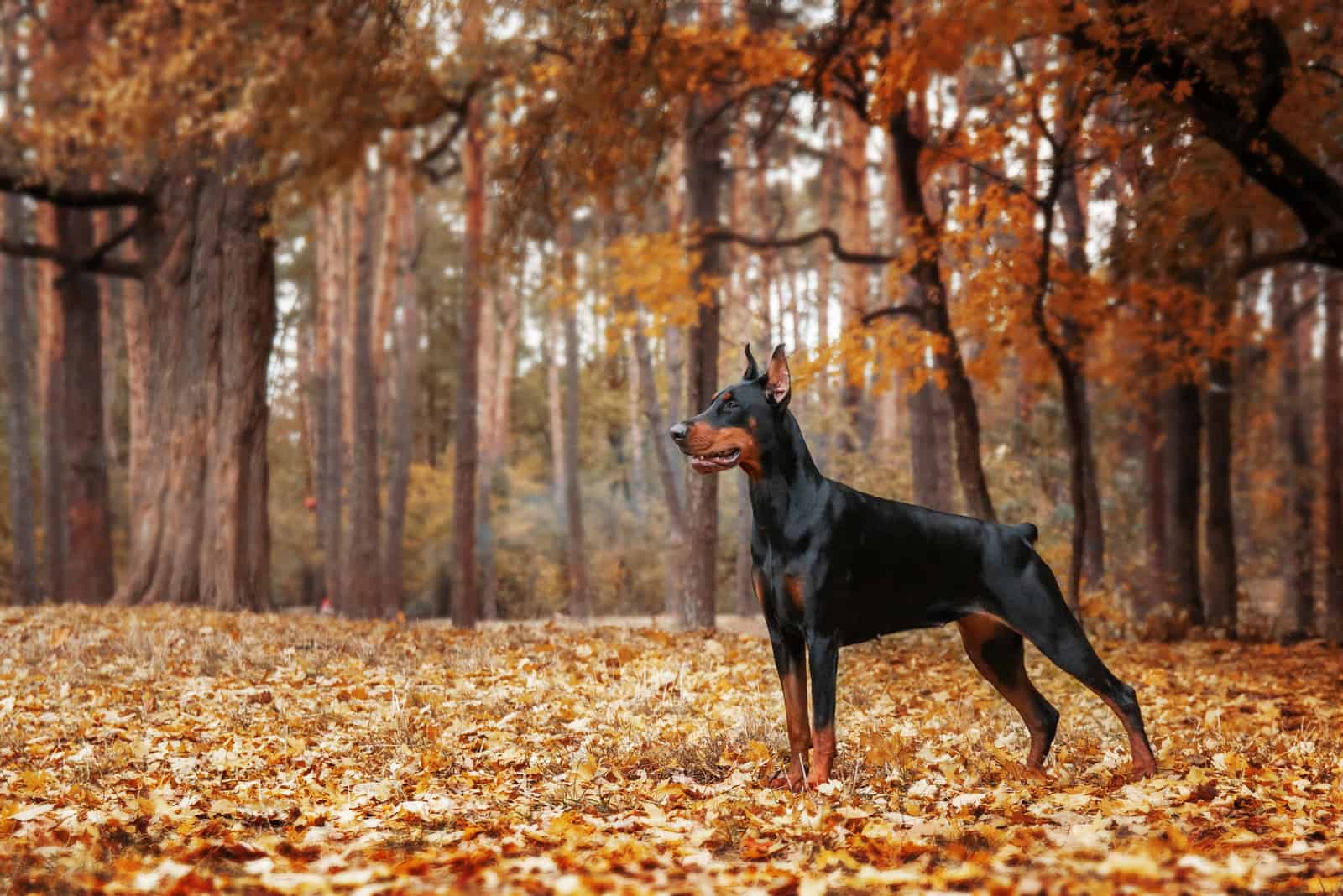
These dogs are usually sold as supersized Dobies. Unscrupulous breeders target people who love the Doberman breed but want a bit more.
As mentioned above, the regular Doberman stands between 24 and 28 inches at the shoulder, which is plenty big enough. They weigh between 60 and 100 pounds, which is proportionate to their height. More than a century of careful, selective breeding has provided the Dobe with the perfect skeletal system and muscular, athletic build. They are agile, strong, and beautifully proportioned.
Some Warlock Dobermans are much bigger, although it’s difficult to give exact sizes. They may have the basic appearance of a Dobie, but they’ll also take on some characteristics of the breed they are mixed with. If they are the result of a Dobie and Great Dane mix, they might be as tall as 35 inches and weigh around 120 pounds. They may have the head of the Great Dane and the body shape of the Dobie, which can look a little odd!
For true Doberman fans, the regular dog looks great just the way it is. Of course, there are arguments for and against mixed breeds. After all, every domesticated dog breed is the result of selective breeding and human interference, including crossbreeding on a grand scale. But this must always be done sensitively and carefully, and only ever by experts.
Warlock Doberman Lifespan
Another problem with the Warlock Doberman is its lifespan. The average purebred Doberman lives for between 10 and 13 years.
Great Danes have an average lifespan of between 7 and 10 years, partly as they are prone to crippling joint diseases and health problems that shorten their lives. Crossing a Doberman with a Great Dane is likely to result in a dog that won’t live much beyond 8 or 9 years if you’re lucky.
Of course, there is a chance that your pup will be healthy, as hybrid vigor could play a part. This is when the offspring of two different dog breeds benefit from the fresh genes after years of selective breeding has reduced the gene pool, as happens with purebred dogs.
Even so, large dogs generally have a much shorter lifespan than smaller dogs, so your Warlock, King, or Goliath Doberman probably won’t see beyond its 10th birthday.
White Warlock Doberman
As mentioned above, white Dobermans are often partial albino (they’re not pure white and don’t always have the pink nose or lack of eye coloring like a true albino). Albinism carries a lot of potential health problems, such as skin cancer, deafness, and blindness.
For this reason, the term white Warlock Doberman should raise a huge red flag!
If you see anyone advertising white Warlock Dobermans, run very fast in the opposite direction. To begin with, they are using Warlock in an unscrupulous way to trick you into thinking this is a rare or special breed. While it could simply be a large Doberman, there’s a good chance that it’s a mixed breed. And if it does have a white coat, there’s an increased risk of health problems that your bank account really doesn’t need.
In all probability, this is an unethical and irresponsible breeder who is trying to cash in on a ‘rare’ dog. While it’s commendable for you to believe that you are rescuing such a dog from an uncaring backyard breeder, if you buy from them, all you are doing is keeping them in business.
There are thousands of dogs like this languishing in shelters and rescue centers all across America. If you want to save a dog, adopt one of them!
Blue Warlock Doberman
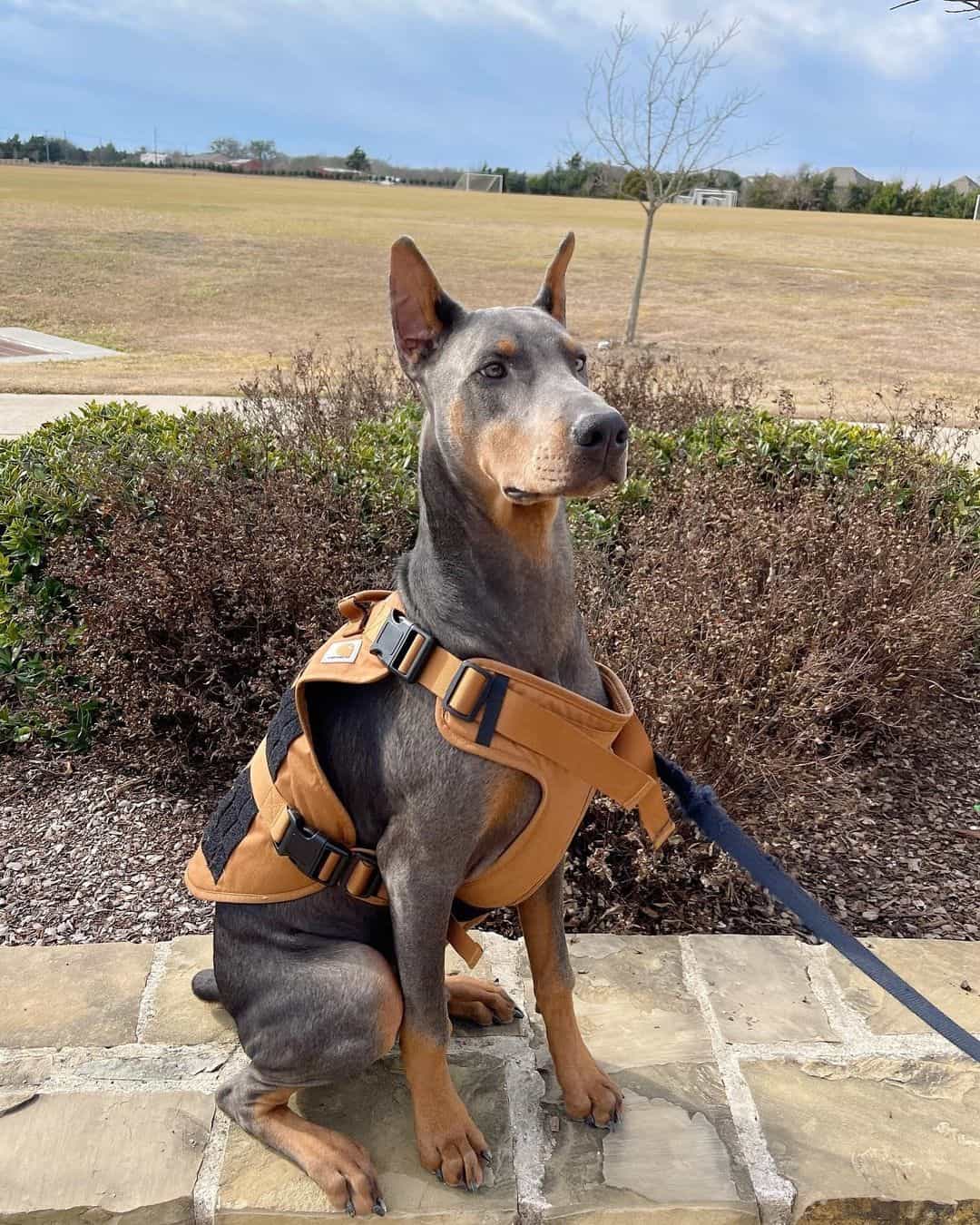
Photo from: @derpboi_dallas
We could copy and paste some of the information from the section above, but that would be cheating (and a bit dull!).
Although blue is a standard color for Dobermans when accompanied by the rust markings, it is seen as a fault without those markings. Of course, blue dogs aren’t really blue as such. It’s a fanciful way of describing a black coat that’s been diluted due to a recessive gene to become a shade of gray.
Healthy solid blue Dobermans do exist when produced by breeders who know their stuff. However, most breeders prefer to stick to the standard colors. They dedicate themselves to preserving, maintaining, and improving the breed. Anything outside of this is unnecessary and could be seen as detrimental to the breed.
However, unscrupulous breeders have no such qualms and will sell whatever colors they happen to produce. Good breeders strive to perfect their breeding programs, aiming for conformation, temperament, and health. Unethical breeders aim to take your cash from you as soon as possible. So, you want a blue Warlock Doberman? They’ll provide one – for the right price – except that it probably won’t be healthy or a purebred Doberman. It definitely won’t be a Warlock. You may be getting the idea now, but Warlock Dobies aren’t real.
Red Warlock Doberman
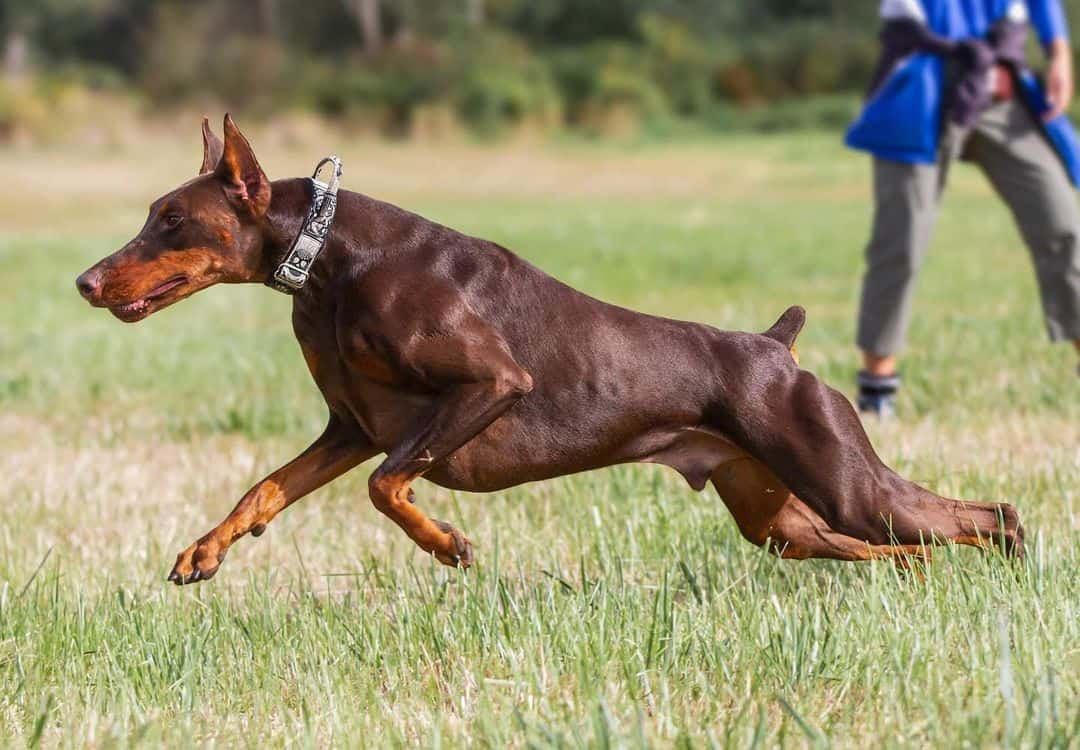
Photo from: @luthersage
Well, we’ve mentioned the white, blue, and now red Warlock Doberman! It might seem patriotic, but it’s purely coincidental.
To be honest, these three particular headings have been included because people have searched for them in the past. We’ve mentioned them here to try to bring some clarity and to help people avoid being ripped off.
The regular red and rust Doberman is simply stunning, with a beautiful sheen to its smooth coat. This ranges from a light copper tone to a deep chocolate color, and each one looks amazing.
Anecdotal evidence from owners of these beautiful dogs suggests that they are more easy-going and less territorial than other colors, but this is difficult to substantiate scientifically.
But what about a red Warlock Doberman?
Once again, it’s a sales pitch, a gimmick to catch out the unwary. As amazing as the red color looks, using Warlock in an advert is misleading, either suggesting that the dog is of a superior bloodline (clue: it’s not!) or that it is a supersized Dobie. Don’t be taken in by the lies!
If you want a red Doberman, get a regular one from an ethical, responsible breeder.
It would be great if we could move on from criminally-minded dog breeders now. Unfortunately, there’s still plenty to say about them.
Warlock Doberman Breeders
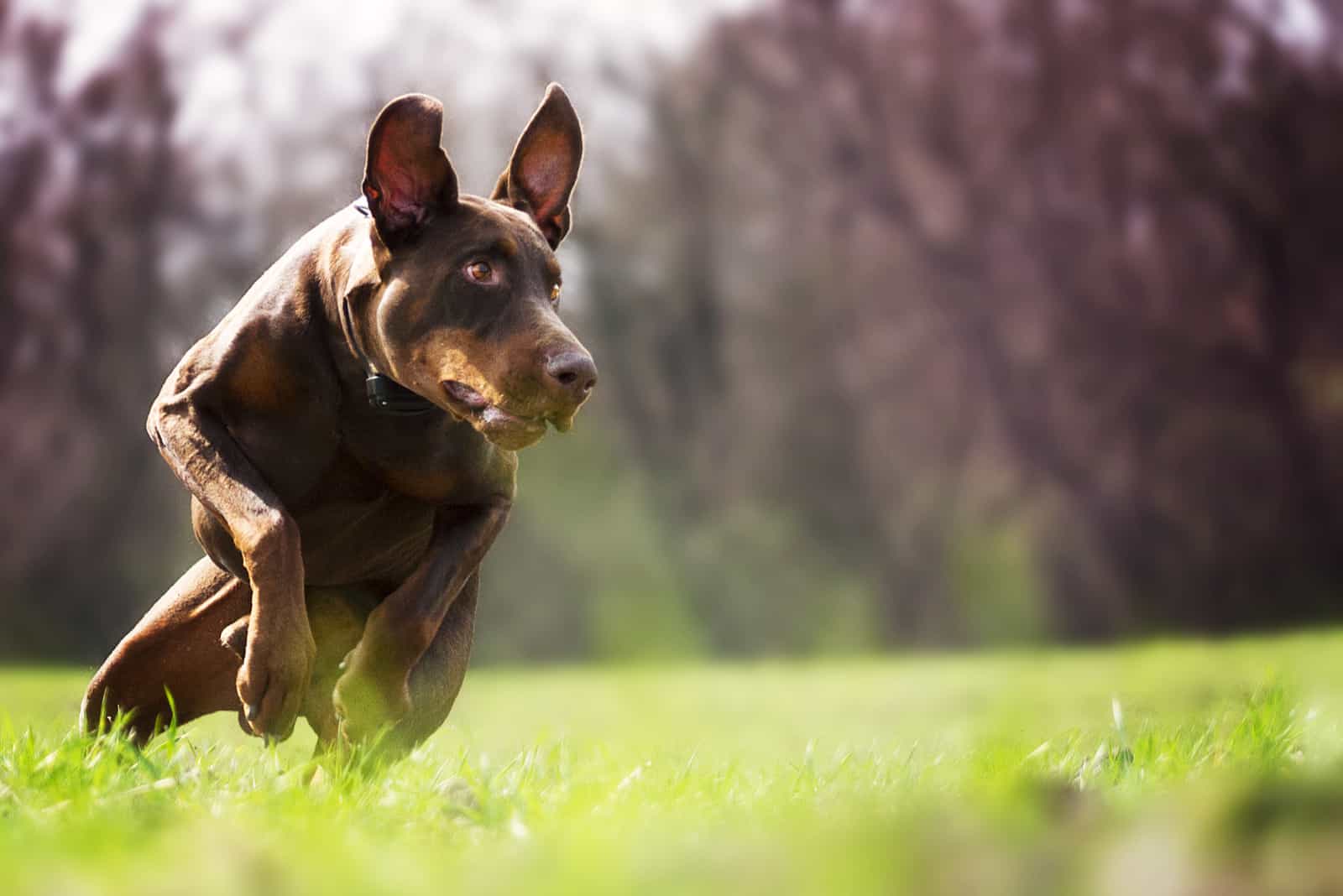
There are around 80 million dogs in the U.S., with an average of 1.6 dogs per home. During the first wave of lockdowns in 2020, as the fuss around the Covid-19 pandemic started to affect everyone, thousands of people decided to get a pet. Most people chose puppies.
This increase in demand brought criminals crawling out of the woodwork, and reports of scams rose dramatically. In the first 9 months of 2021, Americans lost almost $3 million to fraudulent schemes involving the sale of pups online.
Understandably, many genuine breeders didn’t want strangers visiting their homes and businesses at the height of the pandemic when fears about the virus were running high. Many chose to do business online but struggled because of the suspicions surrounding scams.
There are several points that need to be observed here:
• Humans love dogs and will pay good money for them.
• Some humans are not nice and will always seek ways to take advantage, robbing you of your hard-earned cash.
• Buying a puppy online is never a wise move. Unless you can visit and meet the breeder in person, it’s best to avoid buying from them.
• Reputable breeders often don’t make a profit and aren’t in it for the money. They suffer as a result of scams, and they need our support.
What does all this have to do with Warlock Doberman breeders? Scam artists love to use any kind of sales gimmick to catch your eye. They’ll use terms such as rare color, unique breed, XXL, King-Size, and Warlock Doberman.
In many cases, they don’t have any dogs to sell. They set up fake websites and fake shipping companies. They’ll accept your deposit (sometimes asking for Amazon gift cards or Bitcoin!) and then disappear.
Of course, there are backyard breeders, puppy mills, and pet stores that do have dogs for sale, and they are also happy to take your cash. The trouble is, your puppy will be the result of poorly-managed breeding programs. Actually, scratch that. There is no ‘breeding program.’ These dogs are forced to breed as frequently as possible and discarded once they are of no use. They are kept in appalling conditions and given no proper exercise or mental stimulation. They certainly aren’t shown any affection or basic kindness.
These people will happily use the term Warlock Doberman to sell you a dog, with the promise that it is somehow special, perhaps bigger, better, or the offspring of the Warlock bloodline.
It’s essential that you see this for what it is: a big fat lie!
In case we haven’t made it clear enough, avoid any dog breeder that advertises Warlock Dobermans, whether they sell online or not, as they are not to be trusted.
Warlock Doberman Price
Finding an exact price is pretty difficult, as these are often marketed as ‘special’ dogs. As we now know, this isn’t true. They’ll either be wrongly advertised as part of the Borong the Warlock bloodline, or they’ll be crossbreeds that may have many health problems.
Even so, backyard breeders will charge somewhere between $2,500 and $4,000 for a ‘Warlock’ Doberman.
Considering that the average price for a good quality regular Doberman from a reputable breeder is around $1,200, you can see that there’s a big difference. These breeders are simply trying to maximize their profits using the legendary Warlock name.
Warlock Doberman For Sale
By now, you should be getting the message that when you see the words Warlock Doberman for sale, there should be red flags waving madly in your mind.
No reputable breeder will use this term, ever!
In fact, very few good breeders ever need to advertise, period. The very best breeders only produce one to two litters each year, sometimes fewer. Their breeding programs are very carefully managed and planned, and every pup is snapped up months in advance.
Any notifications about future litters will be found on the breeder’s website or social media pages, and you won’t find ads for them on puppy broker websites, classifieds, or Craigslist.
Most of these ads will be backyard breeders, puppy mills, pet stores, or scams.
Our best advice is to stop looking for a Warlock Doberman and get a regular one, or try a different breed!
Warlock Doberman Puppies
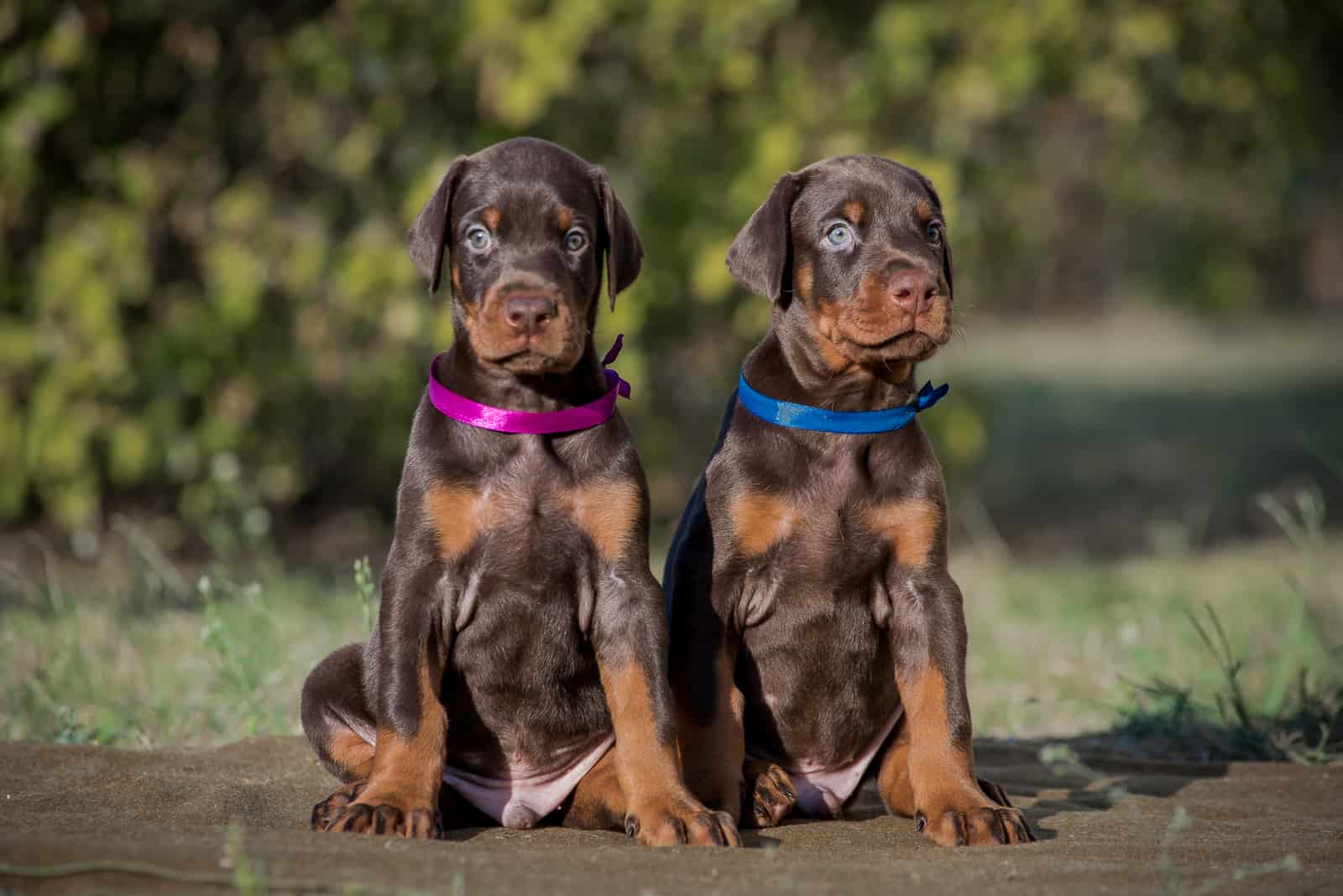
You’d have to have a heart of stone not to go all gooey when you see the word puppy let alone when you see a cute photo. And it’s even worse when you meet one in person!
Most humans are built this way. We’re designed to go soft when we see puppies. We just want to cuddle them forever.
So, when we see an ad that says Warlock Doberman puppies, we may be tempted.
Having read this far, and as you are blessed with common sense, you’ll think twice before taking things further.
As we already said, good breeders don’t have to advertise. Their reputation is enough to keep happy customers coming back. Word-of-mouth recommendations are often the best form of advertising, and these breeders have no need for gimmicks to pull in the punters.
With this in mind, any advert for puppies should be treated with caution. And if that advert uses the term Warlock Doberman puppies, it should be ignored entirely. In the first place, those puppies probably don’t exist. Even if they do, they are probably poorly bred, or they are mixed breed mutts that will have a host of health problems.
That’s not to say that these dogs don’t deserve your love and attention, but if you want to give them a loving home, you should get one from a shelter or rescue group.
The Final Word
If there’s one thing you should take away from all this information, it’s this fact:
There really is no such thing as a Warlock Doberman.
Some breeders use it as a marketing gimmick to fool dog lovers who know the story of Borong the Warlock, claiming that their dogs are part of his bloodline. Proving this would be pretty impossible, although his descendants are obviously out there somewhere. Even so, Henry
Frampton never made any claims to the effect that his dog was anything other than a normal Dobe. The original Warlock was a great dog but doesn’t deserve the hype!
Other breeders produce oversized Dobermans and use the name Warlock as a selling point. This is not advisable, as they are often unhealthy and live shorter lives. Also, they usually aren’t purebred Dobermans, which is surely what any breed enthusiast wants. Organizations such as the DPCA and the American Kennel Club (AKC) certainly don’t recognize the Warlock Doberman, and they actively encourage people to avoid buying them.
Although the AKC isn’t perfect by any means* they set the breed standards based on many years of experience in dog breeding and genetics. All reputable breeders adhere to these standards as far as possible as they understand the risks.
*For example, they opposed at least 80 pieces of local legislation to shut down puppy mills in the U.S. as they make millions of dollars from dog registrations.
The best advice for anyone who wants a Dobie is to buy one from a reputable Doberman breeder. These amazing dogs are pretty big anyway, so why try to go bigger? They’re big enough to be an effective deterrent as a watchdog, and they’ll also have the wonderful Dobie temperament and be a phenomenal family pet. They’ll be healthy, and you’ll have peace of mind knowing that the breeder has invested time, effort, and money in producing a well-rounded dog that will live for many years.
The Doberman breed is prized for its endurance, agility, speed, and intelligence. A century of breeding has contributed to this, and supersizing the Doberman risks losing all of this, as well as introducing a whole range of health issues.
Given the trend for smaller dogs over the last decade, with teacup, toy, and micro-dogs becoming fashionable worldwide, it’s not surprising that some people kick against this, opting for ever-bigger dog breeds. Young men and women especially seem to be drawn to huge, aggressive-looking breeds, and it’s this demographic that is currently attracted to the Warlock Doberman more than any other group.
However, it’s never right to get a dog based purely on the fact that it looks scary and aggressive. This is a major decision involving a sentient being with feelings and needs of its own. It’s a lifetime commitment that involves a lot of emotional, physical, and financial input.
If you really want a bigger dog than the Doberman, then perhaps a Dobie isn’t for you. You might try something like a Boerboel or Cane Corso. Whatever you do, don’t fall for the marketing gimmicks and buy a Warlock Doberman!
Read Next: 8 Doberman Breeders In Illinois: Best Of The Best
